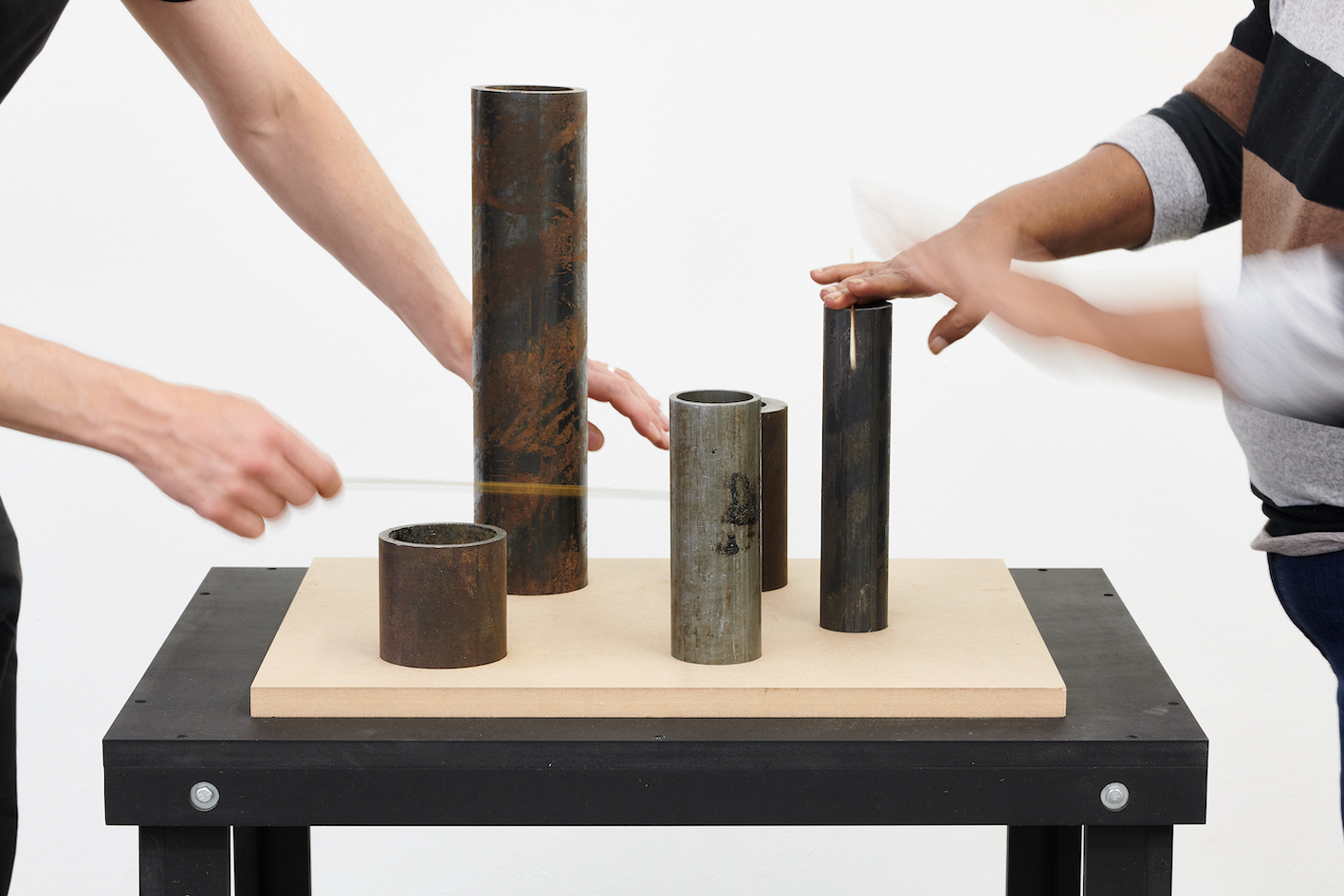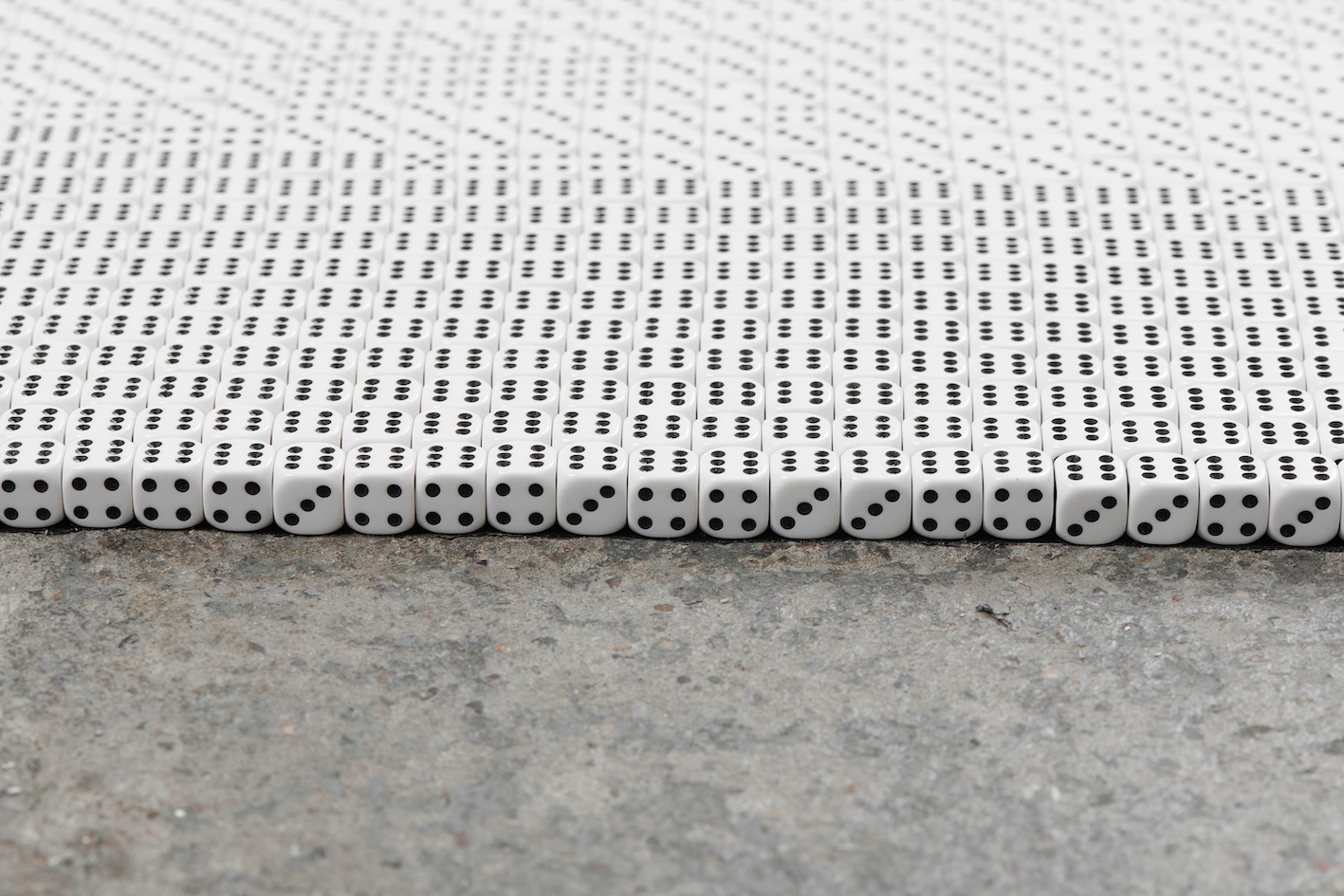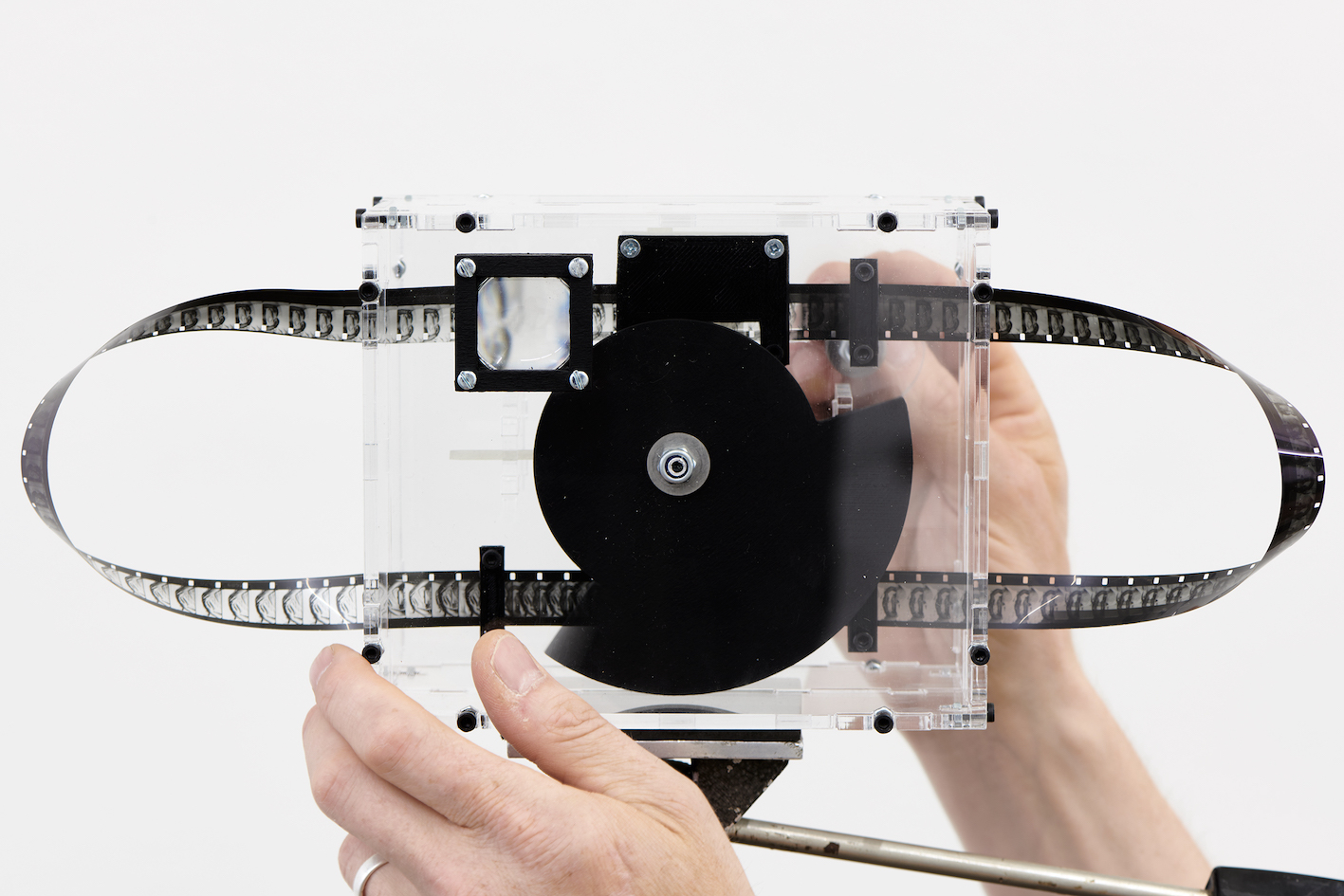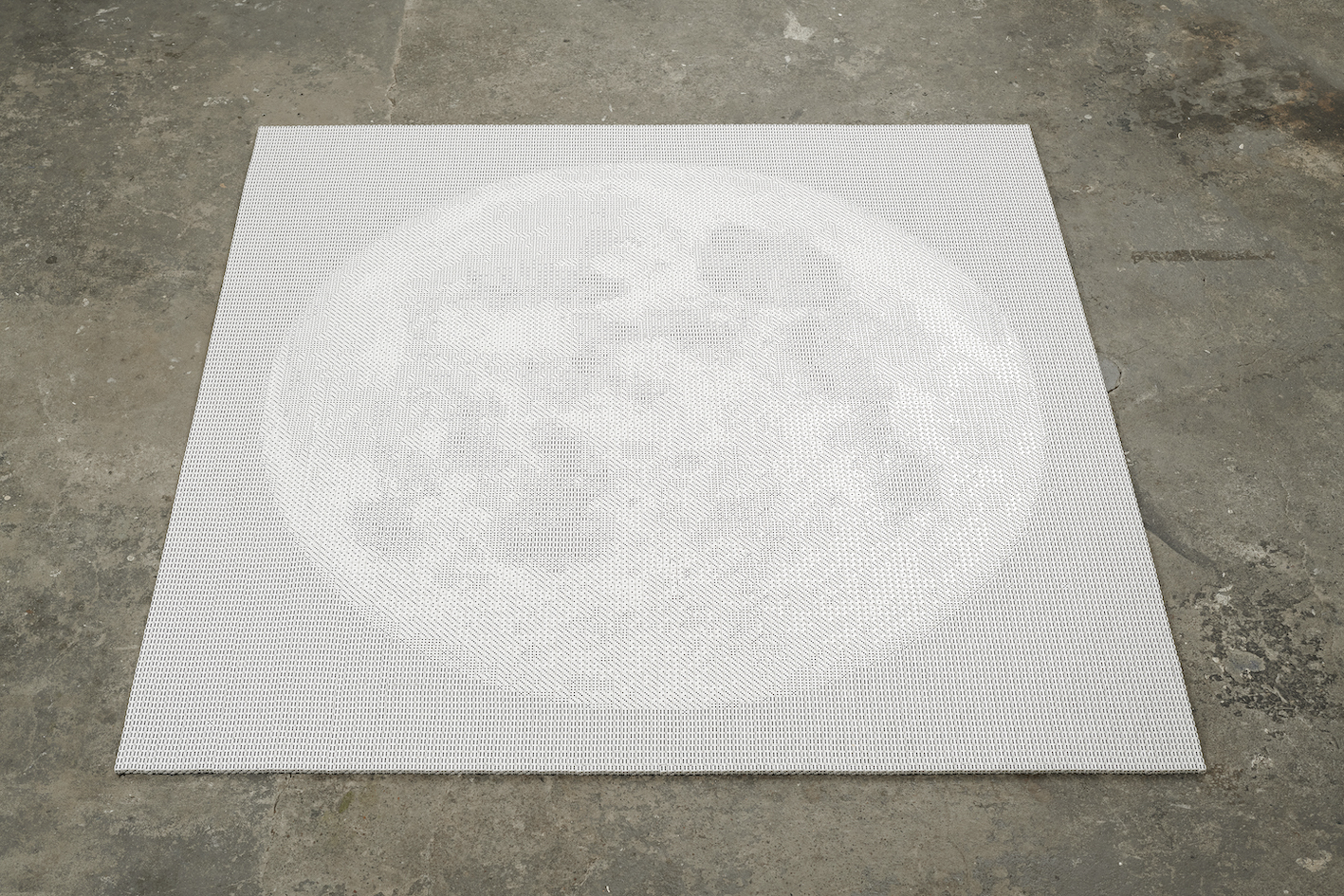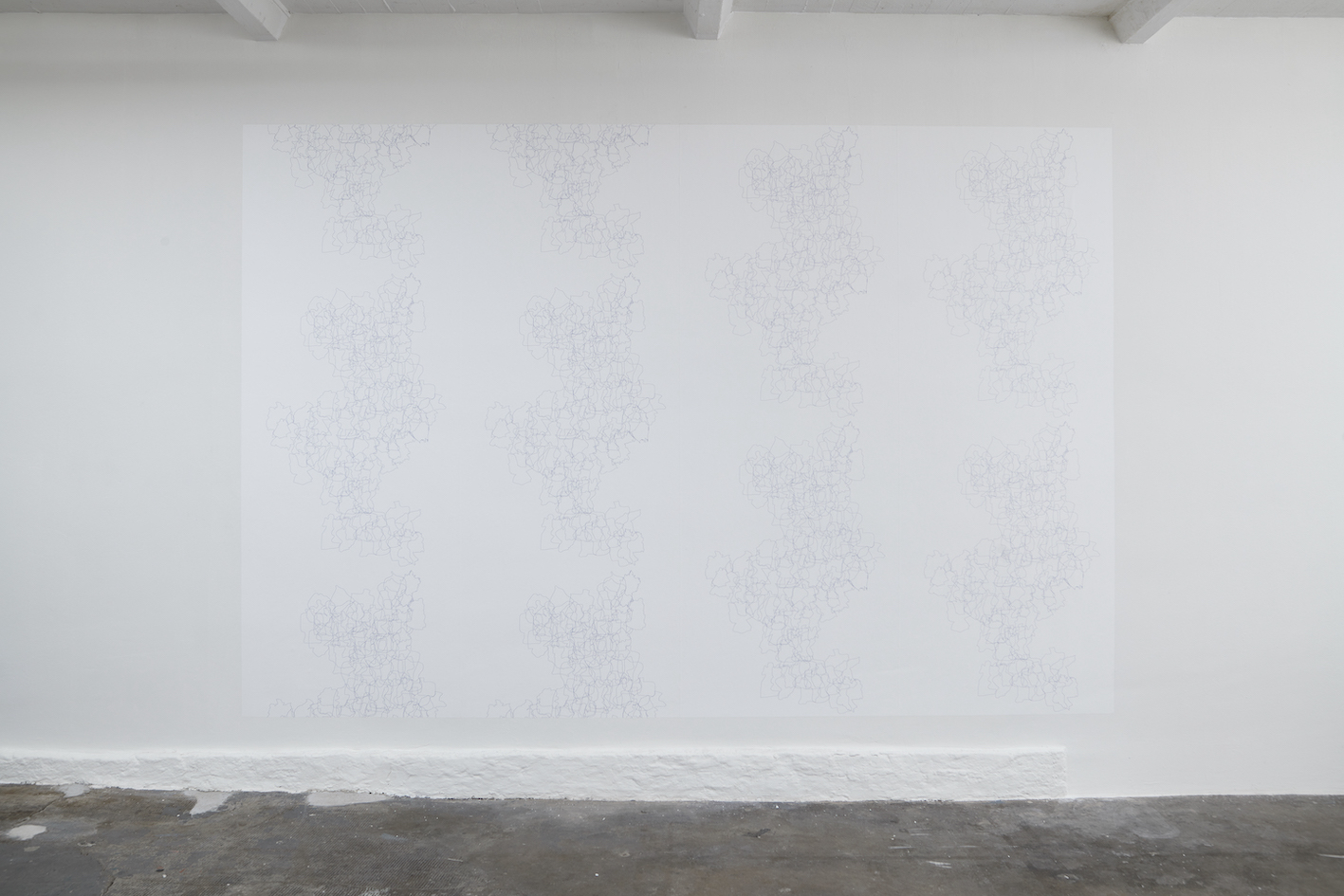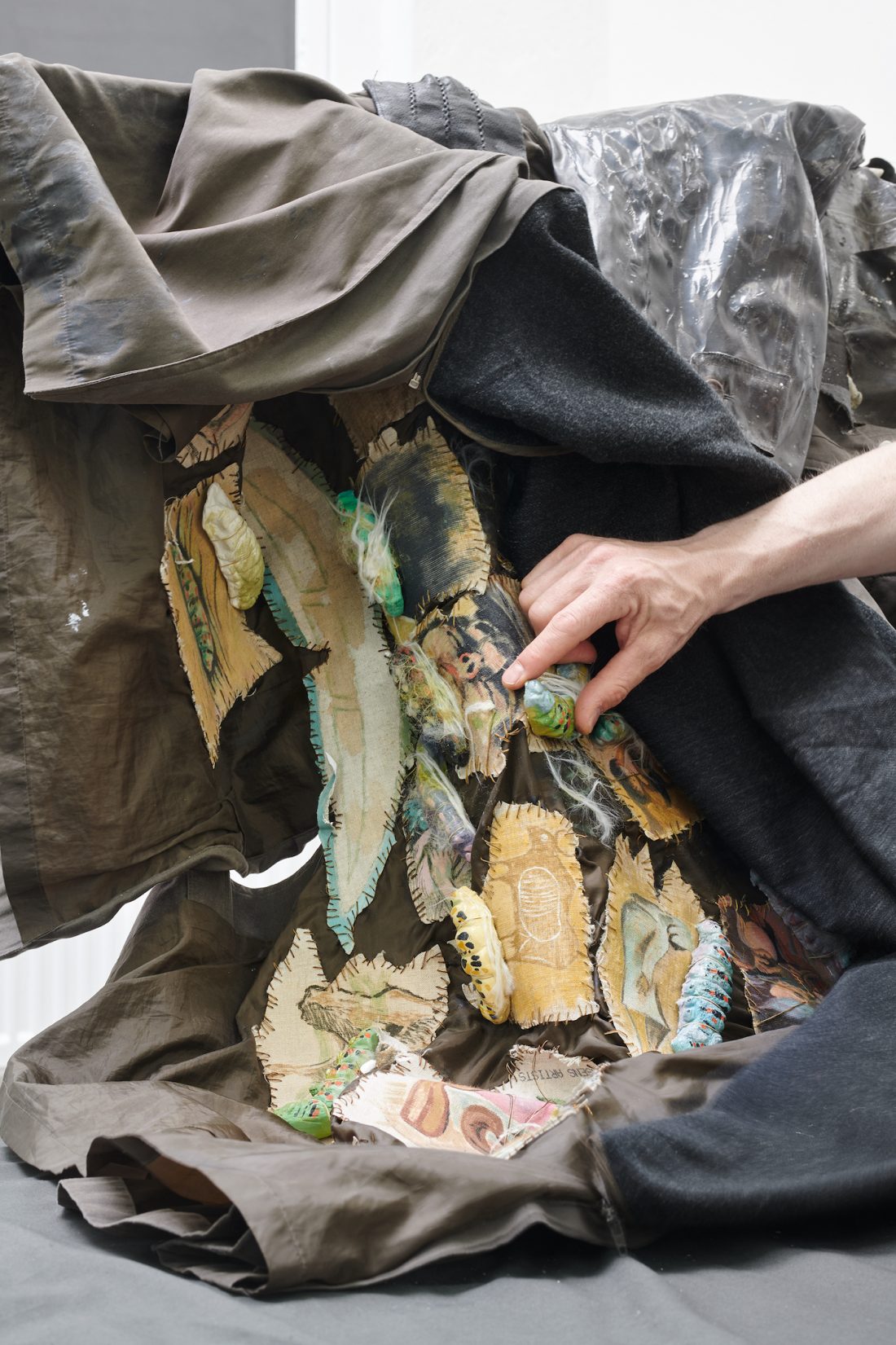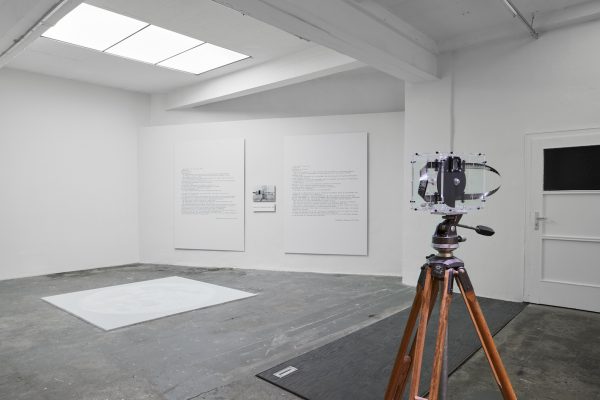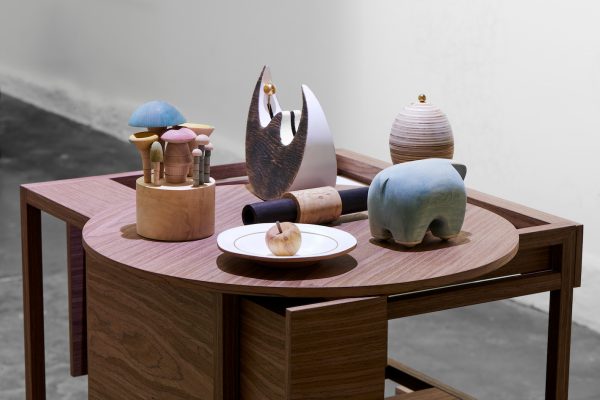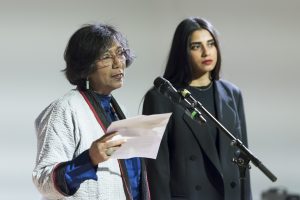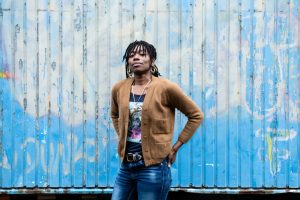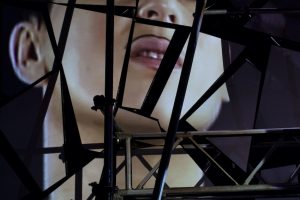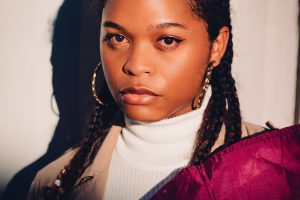Madhusree Dutta: “As artists, we’ll have to be on our toes, and we’ll have to improvise”
Like all other art institutions worldwide, the Cologne-based Akademie der Künste der Welt was hit hard by the pandemic. Their marvelous exhibition “Ghosts, Traces, Echoes: Works in Shifts” was only open for a few days before the first lockdown was announced and the brutal, strenuous effort of openings and reclosings started. Still the team kept going, step by step, with the exhibition – and onwards from that to the new one named “Hands”. Inspired by the pandemic-induced crisis in public life, the show, in addition to showing 10 new works, pays tribute to the Jewish painter and minimalist sculptor and sociologist Charlotte Posenenske, who quite radically tried to redefine the art market by offering her art on the cheap, and is flanked by a series of workshops reflecting on our current state of affairs with a COVID glossary and on aspects of gamification and tactile sensibility.
Madhusree, the exhibition before, “Ghosts, Traces, Echoes: Works in Shifts”, was heavily disturbed by the pandemic and the opening restrictions coming along with that. Was it hard for you to keep motivated to work on the preparations?
Madhusree Dutta: So much work had gone into this… Not being able to open the show for the public is always very sad for the artists. But as that was a local history project, it was twice as hard. That experience influenced this exhibition, at least from my side. Ala, of course, was joining from another location.
The idea of the multiples – for the case that people cannot come – came out of the frustration of the last exhibition that unless you came here, there was no chance to see it, one was not able to experience it from a distance. “Ghosts, Traces, Echoes” was about the idea of experiencing the exhibition collectively with people – and that boomeranged on us because of the pandemic.
Our job is to react to this situation: you get stuck somewhere, then you take a detour, then you maybe come back to that same point again. This is the strategy. The pandemic has made it very clear: there’s not one way of outreaching.
At least the movies selected by you for the show were suddenly publicly visible on the internet. I mention that, because I remember you saying in our last conversation, “I want them in a cinema room.” But then, you changed the course and made them watchable from home.
Madhusree Dutta: You gain something and you lose something, in the sense that the movies were actually curated very carefully – from different locations, from a different scale, you know, putting a classic 35 mm art film next to a cell phone video. So that had gone for a toss, because online is horizontal, right? You cannot really mount things and have a dialogue between the works, it becomes flat. But then horizontal has more outreach. So verticality has depth, but horizontal has outreach. So, you get something, you lose something.
Madhusree, Ala, what was the starting point of “Hands”? How did you two develop the exhibition together?
Ala Younis: Maybe we have different starting points. I was invited by Madhu to participate in a show about labor. My proposal was on aging joints, when parts of bodies are aging because there’s an imprint of labor that we can detect and look at in the joints.
Then some of the formats changed, and Madhu was also suggesting to think about the tactility that we are missing during the pandemic when we are not supposed to touch – we don’t trust our hands to touch even our eyes, or our loved ones, especially the fragile ones. So I think the process of thinking about hands came from this. We can only miss these gestures – or miss the hands themselves or the tactility – when we’re not supposed to use them in the same way as before.
You have another answer, Madhu?
Madhusree Dutta: Our labor show before was about the local history of work. And the idea was that the next exhibition will also be about labor but increase the diameter. The plan was first Cologne and NRW – and then we’ll go international; and the idea was also to expand the time range. So it’s precolonial to colonial to postcolonial.
I had seen Ala’s work on Arab modernity and industrialization, liked it very much and invited her to ADKDW to show it – but I also wanted to develop this problem. So actually, this exhibition was supposed to be ‘labor II’. And then the pandemic happened, as you know, and our ‘labor I’ show got very badly affected. From there on it couldn’t be business as usual, we could not do the same program as we planned before the pandemic, as artists, we’ll have to be on our toes, and we’ll have to improvise on it.
One thing about labor was production and individuals in the production. Not the industrial scheme, but individuals in every scheme, that’s what we’re talking about. At this point, that can be reduced to tactility – basic tactility is at stake, is at risk. Tactility is simply hands as a statement to bring individuals and body and bodily experiences back into the discourse and not the abstraction of social distancing or surveillance.
All these things are happening, also medical security and border regimentation – these are discursive issues and art must respond to them. But at this specific moment in time, it was very important to give it a very pinpointed, a very microscopic attention. So we thought that the title of our exhibition will be simply: “Hands”. We wanted it to be international in the sense of not national – coming from different locations of production. People say that the world has flattened as a result of the pandemic: everybody is affected by a pandemic. Is it true? It is true and not true! Everybody is threatened by the pandemic, but not everybody is similarly affected. So, our brief to the artists was: “What do hands mean to you today as in 2020?”
What personally did you miss the most during the last months?
Ala Younis: I miss holding my parents without fear. But there are also other things I miss, all these spontaneous acts of just handling something, opening, holding, not thinking too much about any sort of activity that you want to do – becoming naturally responsive or spontaneous again.
Everything can be just an example of how we are always absentminded when we touch things, there is that memory of how to do things – normally our body kind of does it for us, now our mind has to be involved as well. That’s some extra burden, I think.
Madhusree Dutta: The spontaneity has gone out of social interaction and also personal way of living. Using our hands is our most intimate but at the same time most easily reflected act. Everything gets reflected by our hands first: you touch, you push, you pull, you extend the hand… The hand is the first body part that acts even before we start thinking or processing our thoughts. As an artist, or even as a person, I think reflex is very important, because a reflex has lots of history, lots of memory. So my theory is that maybe we’ll come up with different kinds of tools for everything else, so that we do not need to touch – even for shaking hands; maybe we’ll have an extension and we’ll shake hands with that, you know, human beings are capable of doing that. But what will happen to the reflex? So our body will be less important in our life? That is my fear. I’m almost afraid that when I see you, I will withdraw my hands – my hands will forget to extend.
Ala Younis: Or, like, don’t touch the handrail, don’t wear the mask, some sort of an oppressed body part or decision that is happening here.
Madhusree Dutta: That makes me feel that there is a burden to this time that is around us, surrounding us. But I am also a little interested – that’s the little pervert in me – what the narrative will look like if we have to write a story in 50 years about “Once upon a time we had hands…” I’m curious how we will tell the story of hands to the next generation.
A lot of people are reflecting now about such a thing as body memory. Will my hands still be able to DJ, for example – but then again, we know that one can still ski even though you did not go skiing for something like 20 years. The body remembers a lot of things.
Ala Younis: Exactly.
Did the last months change your perception of art in a wider perspective? Do you expect other things from art now than you did before? And do you think this will stay like that?
Madhusree Dutta: Before I answer that, I want to go back to the first part of your statement, stating that the actual trust has changed.
I want to put it in a timeframe: when we started to talk about the relationship of the body and production at the end of 2019, we thought about it in terms of the past – and suddenly, in our own time, the previous month has become history. Before that, looking at the past meant colonial time, or precolonial time, and now suddenly 2020 is already history.
So, the concept of history, the concept of looking back changed. In a way I feel very liberated also, suddenly these two years are almost like a century or almost like an era.
Now, it may change, I don’t know, who knows about the waves the virus will play on us. But at the moment, these two years feel like a century in terms of experience. This change in timeframe, the change in the concept of past, present and future is exciting. It’s very challenging. It’s also scary. Artists have a very important role to play in these times, I don’t know whether we will be able to cope with such a challenge.
Ala Younis: My feeling personally is that it’s temporary. Maybe it lasts for a few years, or a few months, but in the end we will be conscious of the moments of coming back to exhibitions after having a period of no public events, or people crying because they could dance together again.
I think there was a moment of naturalization that we were all kind of living in. This was challenged by the conditions of the pandemic. And then there are all these little things that kind of give us an indication. So for instance, a couple of months ago, there were so many COVID test centers around the cities, in every street, in the supermarkets, bars, I don’t know, everybody had temporarily converted their space into a test center. But now it’s not there anymore. These are very little noticeable changes of how things can take a temporary shape or function. I think it’s temporary. I hope so.
Madhusree Dutta: I disagree. I think there’s no going back in life, it will be something else. I mean, I hate that term. Time is endorsing it.
The church bells are ringing – as a sign?
Ala Younis: The signs of the catastrophe are fleeting.
Madhusree Dutta: I hope they’re not. I hope that we learn a lesson and it remains a landmark in our life. It should not be: “Oh, we had a crisis for two years, now we are through with it.” What I’m saying is, these two years have been essential.
But what you are describing are also the economics of such a pandemic. That we don’t see those test stores anymore is connected to the possibilities of making money with them. So these people who make the fast money run away to the next thing. What I wanted to ask you – you speak of the ‘therapeutic potential’ of art. Not that this is totally new, art has always been a place to heal the wounds that the abysses of society cause on our bodies. But the wording definitely changed, we would not have used therapeutic before, right? How do you feel about this?
Madhusree Dutta: I don’t think five years back, I would have ever used it. Because, in a way, I am not for art for healing, or art for forgetting, I’m more for art for anger, or for resistance. And I would have insisted on that role of art. I belong to that practice of artists’ resistance: artists against amnesia, art against forgetting. But this time, because this is a very special time, again, I’m repeating myself, we need to first bring some kind of social equilibrium – we need to allow people to relax, forget the problems for some time. So in that sense, such an exhibition is temporary.
An exhibition called “Hands” will be relevant at any point, hands are very important parts of people’s lives, it has nothing to do with the pandemic, but in the times of a pandemic our brief to the artists was that you’ll have to be playful and interactive, we’ll have to invite people in.
Sometimes we may produce cryptic art, we want to challenge people’s understanding of their time, of their history. But this time, we want to make people feel good. It’s a feel-good show. I don’t think I have done such a feel-good show ever before. But this time we are having a very inviting atmosphere, we are inviting people – that is therapeutic. To bring a kind of collective life or a public life back.
So actually, the day of the opening, it was very nice. At one point, I looked around, and there were seven people standing next to each artwork in one room and explaining to others what they are – and those seven people were neither me nor Ala. Really, they had the confidence that they could explain that, they thought they understood it, they got it, actually they may or they may not have. That public emotion was important for the show.
Ala Younis: First of all, we’re very happy that these works, produced in the context of the show, didn’t exist before. The artists were really thinking of the time that we’re in. But also that these works can be touched, and that we are willing to investigate them with our bodies, that the people are willing to handle objects that were already handled by others just before them without necessarily being too precautious.
So, there are these aspects of this show, born from limitations and the fact that we were not sure how things were going to develop. We produced a reflection on this particular moment in time where it’s not about just making an exhibition of interesting art only, it’s about meeting in this willingness of artists to allow their work to be handled and of people to be willing to handle the work as well.
Madhusree Dutta: And also the fact that the artists agreed to produce multiples. I mean, there has been a tradition or art movement where artworks were produced in multiples – to challenge the market. So I’m not saying that we have done something very original, this happens often in art practice. But what was important here, is that these are not craft artists, they are modern artists, they are contemporary artists. They challenge the concept of original when they produce multiples.
I don’t think the right to copy is against anybody’s right on the original – these are unnecessary polemics created by the system – that if you reproduce art, then you are actually denying somebody’s right over their creativity. It’s not true, the distribution has nothing to do with your own right over your own work. This polemic has been created to protect the market.
That’s what I’m saying: you lose something, you gain something – because of the pandemic, it was a wonderful opportunity for us to bring that logic back into the art world; that it is possible to produce art in multiples, so that at least 10 people, 20 people can own an original artwork and not only museums and collectors. The artists wonderfully responded to it, almost everybody agreed to participate. Nobody said no.
- “Hands”-Multiples (Photo: Mareike Tocha)
- Ali Eyal “Where Do the Walls of the Museum Go When They Are Forgotten” (Photo: Mareike Tocha)
But this brings us to the question: What does this mean for the artists? Are we pressuring them? Is it a burden to them, when we ask them to produce – I don’t want to use the wording ‘light art’ because when I look at the exhibition, there’s still so much political implication to the works, there’s still a lot of room for interpretation. What do you think? Are we pressuring them? Especially as they have their own personal struggles, like political and financial struggles – do they also have this specific struggle now that people expect different things from their art to be delivered?
Ala Younis: I don’t think we used the word therapeutic when we were speaking with the artists. Maybe we described what is going to happen rather than named it?
I think, yes, maybe this put more pressure on the artists in one way, but also challenged them. They were all interested in this exercise of what possibly can be done in such conditions, what possibly can be thought of? Even the pricing that we chose for the multiples, that is, one price for any work, whether it is a small or a big work, whether it costs more or less to produce.
I felt like, you know, maybe artists were hugging their works before they gave them to us. There’s an aspect of immediacy, the work is there and we can grab it, which is something that we cannot necessarily install, it just happens because of the process. That’s why I say there are so many aspects to this show, or this way of making this show, particularly in its own reflection of the time doing so.
Also, when we were thinking about this, it was a time when public spaces were starting to shut down again, because of the mutation that was coming out in January 2021. When we were calling artists, they were like: “Well, it’s great to be called to make something for a show rather to cancel or postpone a show.” This period of planning was also productive for all of us.
Madhusree Dutta: These are all new works, from the conception to production. Many people were actually completely isolated when they received our invitation – they could not go to their work, they could not meet anybody – so it might have been therapeutic for them. Many people told us, thanks for this invitation, “It gave me an opportunity to think through something, otherwise it was too depressing”. Most of them could not go to their workplace, they could not get raw material, they could not transport things, they could not talk to their own technicians, so they had to work with what was around. Some artists told me that the four months of working on it passed so quick only because they were actually working after a long time. Artists are also part of this society, right? They were also as isolated or as depressed as anybody else. We think it was a challenge, and artists always love formal challenges.
Looking at the list of artists involved in the exhibition: Cevdet Erek, Ali Eyal, Shilpa Gupta, Taus Makhacheva, Dhali Al Mamoon, Nicolás Paris, Charlotte Posenenske, •• Propaganda Department, Evariste Richer, Yazan Rousan, Kerstin Schroedinger, Antje Van Wichelen + Maxime Gids – what made you choose specifically those artists? Where do you see connecting points between them?
Ala Younis: Every artist has had their own entry point somehow. So for instance: Cevdet Erek is known for his time rulers, which basically can redefine the zero point in time.
What is your point of reference when you are referring to time? Before pandemic? After pandemic?
We were thinking of multiples for this show. So we questioned ourselves: what possibly can multiples be? You want artists to deal with different materials, you want them to create objects that people can handle or want to keep.
For instance, Cevdet Erek has produced many works of this type, that people can sit on or use to draw them. He’s a musician and artist and architect, so he put ideas of tactility together from different backgrounds.
Another example, Evariste Richer, from Paris, is interested in science, so he can basically identify or can put together work from magnets or from rocks or from small plants or from physical aspects of a material.
It was interesting to think of artists from what they have produced and how they can also deal with materials. What sort of big objects can we have in the exhibition? What kind of miniature or multiple can be produced? Also how to think about aspects of play, handling, or also production – there are many, many issues that were taken into consideration in this process.
I also wanted to mention what is maybe not so visible in the exhibition – all the phases of the proposals that we got from every artist before we arrived at this final product. Conversations with Cevdet for a while were involving cologne bottles that people take away from the show. There were other ideas that were super different – we had many meetings, and artists would think, come back, think again, come back again. There was a long process of thinking about the objects until they settled on these versions.
The reasons why we chose these artists are also embedded in these processes that are not so visible, I mean, we see the objects in the end, but this organizational history is also inclusive of these reasons.
Madhusree Dutta: The genesis of this project started with labor and thoughts about the history of labor. When we decided that now we will have an international group show, two categories became very important: one is the political positioning of the artist – I mean the way the artists position themselves.
There is one group, •• Propaganda Department, they are a collective, a collective of four people in four cities (Hong Kong and three other cities in China). By their name you can make out that coming from that region they are very political people. We invited them because of their positioning. We did not know before if they would be interested in the concept of multiples as this makes their own work a little vulnerable, it’s not really a show that provides protection from political repercussions.
So, they will take the risk of making their work vulnerable if we can promise them that the outreach will be great: “We cannot protect your work, but we can take it to people.”
Ala already talked about us choosing artists depending on the materials they work with. Another point is location – by location I mean not countries nor nation, but different practice location. So these are the three criteria.
Ala Younis: There’s one more aspect, but that kind of disappeared with time. We thought that maybe there would be a sheet that people can download and make their own versions of the work – and just put up the show again.
Madhusree Dutta: Replicable work and reproducible exhibition. We could not yet make it really reproducible, I mean, Ala and I wanted it to be a reproducible exhibition. But that recalls why we included Charlotte Posenenske in the exhibition; she is not a participating artist, she did not consent to be in this exhibition. She started this practice in 1967, just a few months before she gave up art. She had large works, which are public art, but she also had small multiples meant for individual buyers – anybody who wanted to buy those multiples, she used to send them an instruction sheet so they could make it themselves. That’s why we refer to her and say: all ideas have a genesis, a history, a memory.
In the exhibition you quote Charlotte Posenenske with a quite heavy statement saying that art is not able to change anything. This sentence stuck with me because the whole exhibition tells something different.
Madhusree Dutta: This text on the wall is her manifesto. She practiced art for only 10 years, from 1957 to 1967 – and then she gave up exactly by saying this sentence. She became a labor-union social scientist. She lived for another 20 years but she never touched art again, and she never allowed anybody to exhibit her work anymore. She died quite young in 1985.
The last two years of her art production are the most exciting time; in this period she made huge artworks made out of aluminum and cardboard – like the one on the photo in the exhibition with the airplane – where her work is larger than the plane. But that would not survive for more than six months. So you’ll have to reproduce it, or it would disappear completely. She believed in reproduction, which was not so uncommon in the art world of the ’60s. After she gave up art, she did not allow anybody in her lifetime to exhibit her works. She was erasing her own footprint, in a way.
Charlotte Posenenske’s art was public, it was part of the life of the people – and it was also ‘do-it-yourself’ art. She wanted art to … she believed that somehow art will change the society. That is her personal belief and disappointment that she wrote in that manifesto.
Now in the exhibition you find this quotation. But I as a person, I don’t believe that any one single phenomenon can change the world, either art, or politics, or a union, or collectivity, or discourse, no one thing can change the world. And the world doesn’t change dramatically, it changes slowly. So it cannot be measured how much the world has been changed by a certain artwork. Art would have too much power if it really could change the world. Artists are not always right. There is also propaganda art. So nothing great about art.
Ala Younis: Or market-driven art.
Well, it changes the world as much as all other things are changing the world.
Ala, let us come to your work. There is no multiple existing for your film, right?
Madhusree Dutta: Actually there are two works which you cannot take home from the exhibition: the manifesto of Charlotte Posenenske and our curators’ manifesto – the work of Ala Younis. My invitation to her was that she should produce a work which is a proposition of what we’re trying to do.
Ala, how did you step into that challenge and why did you decide to work together with the Egyptian poet Iman Mersal for your video installation “Hands: dismemberance”, a work reflecting about the broken, aged, deformed and replaced characters of memories of solidarity?
Ala Younis: First, while I was working with Iman Mersal on the idea of her traveling on the solidarity trip to Baghdad with a group of feminists, I was working separately on this idea of hands and joints. I was interested in how many people say, “We can’t count 2020 as a year because nothing happened in it – this is not a year of our lives, nothing was happening.” I was thinking to myself, it doesn’t mean that we haven’t aged. Perhaps our feeling of events in 2020 was obstructed, but our bodies have their own automatic timers. In times when people are losing their strength or have less power, they are reflecting on what they used this power for when they still had it. People become more conscious about the times they are living in – and sometimes offered to help without necessarily being asked to. I was always interested in this moment of voluntarily helping someone. How can we speak about this in this power-challenged moment?
When Iman and I were exchanging about our project, we felt like we are meeting in between these stories and feelings. These are not two projects, they are one – both are about disabilities after the involvement of bodies in action. What are the symptoms of a disability in a limb? A shaking or unstable hand, for example. During her trip to Baghdad, Iman writes about a water faucet inside the hotel room toilet that was fixed with something else. The visible fixing was a metaphor for the state of sanctions on Iraq, when there was nothing coming in or out of the country.
This is similar to the times of pandemic, only that the political project is different. So how do you see the symptoms through an object? First of all it is an object and it has a function, but it can tell you more about the conditions of limitation. The drawings that are included in this work, they are my drawings, and they are the last drawings that I’ve done as a painter. The sculptures that appear in the work are by Jewad Selim, an Iraqi artist who was commissioned to create a work that documents the moment of the revolution in Iraq when the monarchy changed to republic. He was working on this very enthusiastically, until he was asked to include an image of the prime minister – something he didn’t want to do. So he worked in great secrecy and managed to finish all his sculptures – and died. His death protected his work; nothing can be added to it, but it has be honored and installed. He paid a bodily price for it.
This is probably just the first phase of a longer project, it’s only a curatorial commentary or prologue so far, but maybe it’s going to develop in other directions that are less about hands, and more about what we have done with them.
Ala, Madhusree, thanks so much for this conversation.








